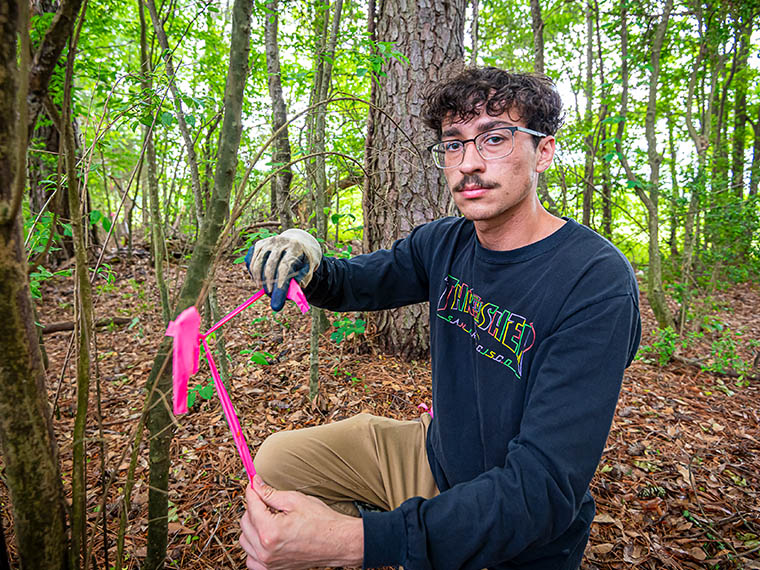When it came time to choose a college, Mississippi State University was a natural fit for Starkville native Ryan Leach. A junior double majoring in landscape architecture and landscape contracting and management with a concentration in ecosystem management, Leach found the perfect place to combine his interest in design with sustainability.
MSU's nationally recognized landscape architecture program drew him in—not just because it's close to home, but because it offers one of the top landscape contracting programs in the country. Leach is pursuing a new focus area within the landscape contracting and management program focused on ecosystem management. This concentration blends environmental science, environmental policy, and sustainable landscape management, giving students the opportunity to approach landscape work with sustainability in mind. Leach's course of study combines the best of both worlds, giving him a solid understanding of how sustainable landscapes are designed, built, and maintained.
With its growing reputation for ecological design and management, MSU's approach is grounded in applied learning, offering students experiences through internships that focus on ecological restoration, specifically in urban settings.
"Originally, the program paired landscape contracting with business management," he said. "But this new track lets us take courses in ecology, biological sciences, and even wildlife and fisheries, while teaching us how to design and manage landscapes in a way that's good for the environment."
During his sophomore year, Leach became involved with the Undergraduate Scholars Research Program under Dr. Tim Schauwecker, professor, Mississippi Agricultural and Forestry Experiment Station scientist, and undergraduate coordinator in landscape contracting and management. Under Schauwecker's guidance, Leach joined a research project centered on ecological restoration, focusing on removing an invasive species known as Chinese privet from the Red Bud-Catalpa Creek Watershed on MSU property.
"I spent the first half of the summer mapping the density of Chinese privet along streams and forest edges within the watershed," he said. "We found around 152 square acres of land inside of MSU's property with a medium to high density population of the plant."
During the second half of his summer, Leach and Schauwecker tested removal methods that wouldn't harm nearby plants. They used a technique called hack-and-squirt, where a small cut is made at the base of each plant and a targeted herbicide is applied. The method had an 85% success rate.
To gather the data, Leach used printed satellite images from Google Earth and tracked plant locations on foot, marking the density and site conditions by hand. This hands-on approach gave him valuable experience with real-world ecosystem restoration. Because of this experience, Leach is now considering future roles in habitat restoration, ecological design, or environmental management.
"This research gave me the chance to collect real data and see how science connects to design," he said. "It made me realize that I'm interested in things like habitat restoration and ecological design."
Leach credits Schauwecker with playing a major role in shaping his college experience.
"Dr. Schauwecker brought me into the program and helped me land my first internship. He introduced me to watershed management and the ecological side of design," he said. "That experience really shaped how I view my future in this field."
This research was funded by the Mississippi Agricultural and Forestry Experiment Station.

